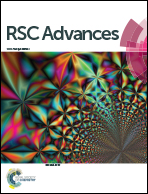Plant kelch containing F-box proteins: structure, evolution and functions
Abstract
Ubiquitination of regulatory proteins, catalysed by three enzyme complexes, E1, E2 and E3, renders the target proteins vulnerable to degradation by the 26S proteasome system. SCF (SKP1-Cullin1-F-box) is one of the best characterized among many E3 (ubiquitin ligase) complexes, which catalyse the transfer of ubiquitin to the substrate protein. F-box proteins constitute the most important part of the SCF complex, through which it interacts with the substrate proteins before they are transferred to ubiquitin. F-box proteins, in addition to the N-terminal F-box domain, contain C-terminal protein–protein interaction domains, including the WD-40 domain, leucine-rich domain, kelch domain and other domains. The kelch containing F-box protein (KFB) subfamily is one of the largest among plant F-box proteins and thought to be plant specific. The roles of some plant KFBs, like ZEITLUPE (ZTL), FKF1 and LKP2 have been well established in circadian clock and flowering time regulation. In the last few years, the functions of several KFBs have been revealed in various phenomena of plant physiology, but most of the members of this subfamily still remain ‘orphans’. This review highlights the structural, evolutionary and functional aspects of plant KFBs, with special focus on our understanding and recent developments for their roles in plant growth, development, secondary metabolism and defense.


 Please wait while we load your content...
Please wait while we load your content...